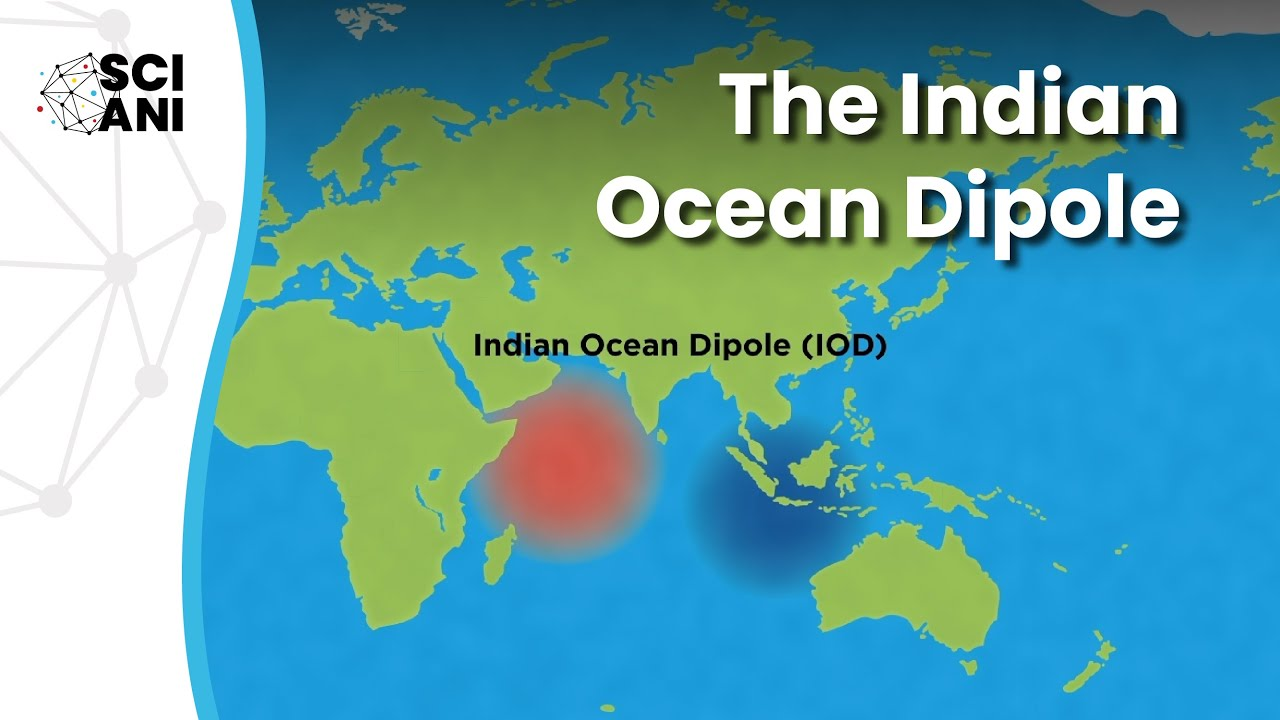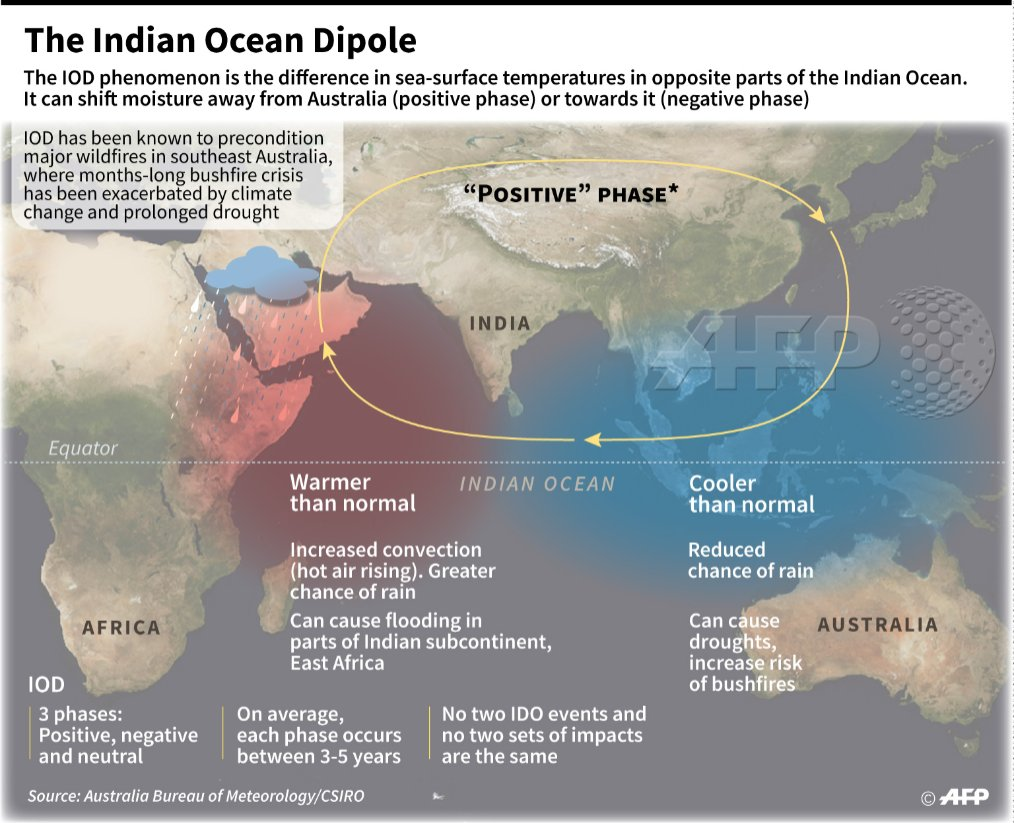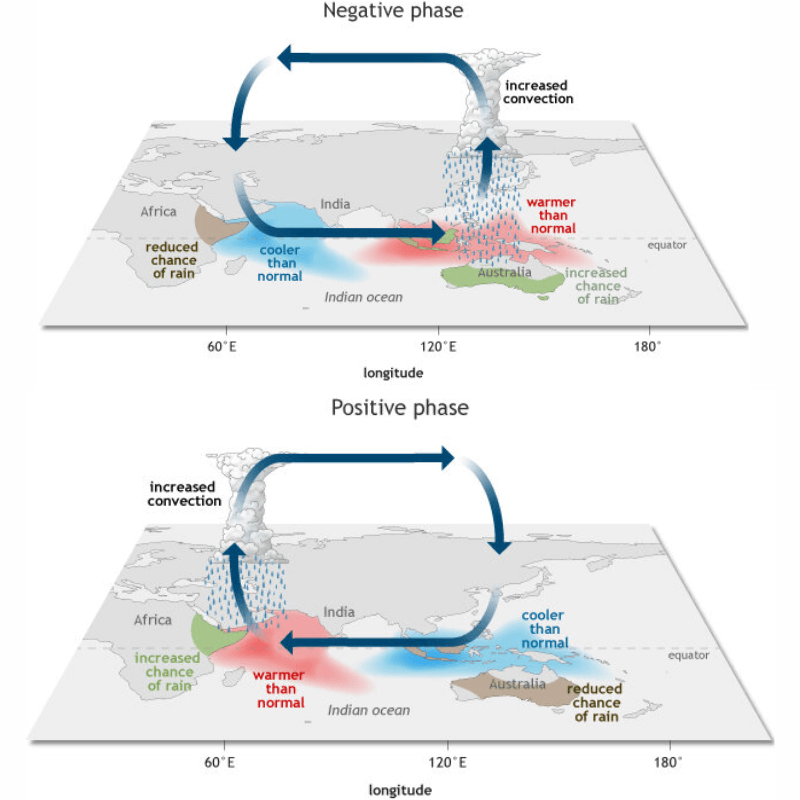Free Courses Sale ends Soon, Get It Now


Free Courses Sale ends Soon, Get It Now



Context: The potential re-emergence of a positive Indian Ocean Dipole (IOD) or Indian Nino in the latter half of 2024 could impact India's monsoon patterns, potentially affecting rainfall distribution and agricultural outcomes across the country.
About Indian Ocean Dipole (IOD) or Indian Nino
The Indian Ocean Dipole is primarily driven by the following key factors:
Differential Heating
Atmospheric Interaction
|
The Walker Circulation is an east-west circulation of the atmosphere above the tropical Pacific, with air rising above warmer ocean parts (usually in the west) and sinking over cooler ocean areas (typically in the east). Its strength varies with that of the Southern Oscillation. |

Phases of the IOD
Positive IOD Phase
Negative IOD Phase

IOD Indicators
Effects of the IOD
Source:
|
PRACTICE QUESTION Q. Consider the following statements regarding the Indian Ocean Dipole (IOD): 1. The Indian Ocean Dipole (IOD) phenomenon is also known as the "Indian Nino." 2. It has no significant impact on the monsoon rainfall over the Indian subcontinent. 3. It is primarily influenced by atmospheric changes rather than oceanic conditions. 4. A positive phase of the Indian Ocean Dipole (IOD) is associated with cooler sea surface temperatures in the eastern Indian Ocean. How many of the above statements are correct? A) Only one B) Only two C) Only three D) All four Answer: B |
© 2024 iasgyan. All right reserved